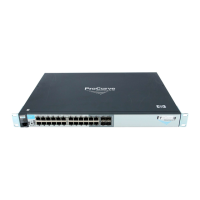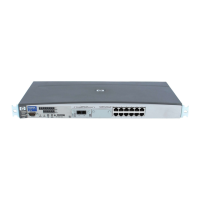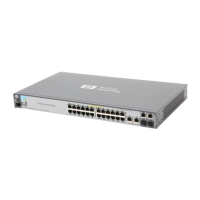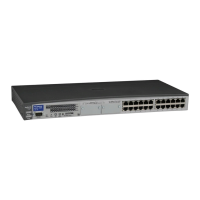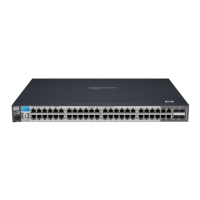11-16
Port Trunking
Port Status and Configuration
Syntax: no interface <port-list> lacp
In this example, port 6 belongs to an operating, dynamic LACP trunk. To
remove port 6 from the dynamic trunk and return it to passive LACP, you would
do the following:
ProCurve>(config)# no interface 6 lacp
ProCurve>(config)# interface 6 lacp passive
Note that in the above example, if the port on the other end of the link is
configured for active LACP or static LACP, the trunked link will be re-
established almost immediately.
Web: Viewing Existing Port Trunk Groups
While the web browser interface does not enable you to configure a port trunk
group, it does provide a view of an existing trunk group.
To view any port trunk groups:
Click on the Status tab.
Click on Port Status.
Trunk Group Operation Using LACP
The switch can automatically configure a dynamic LACP trunk group or you
can manually configure a static LACP trunk group.
Note 2510-24 Switches: LACP requires full-duplex (FDx) links of the same media
type (10/100Base-T, 100FX, etc.) and the same speed, and enforces speed and
duplex conformance across a trunk group.
LACP trunk status commands include:
Thus, to display a listing of dynamic LACP trunk ports, you must use the show
lacp command.
Trunk Display Method Static LACP Trunk Dynamic LACP Trunk
CLI
show lacp command Included in listing. Included in listing.
CLI
show trunks command Included in listing. Not included.
Port/Trunk Settings screen in menu interface Included in listing. Not included

